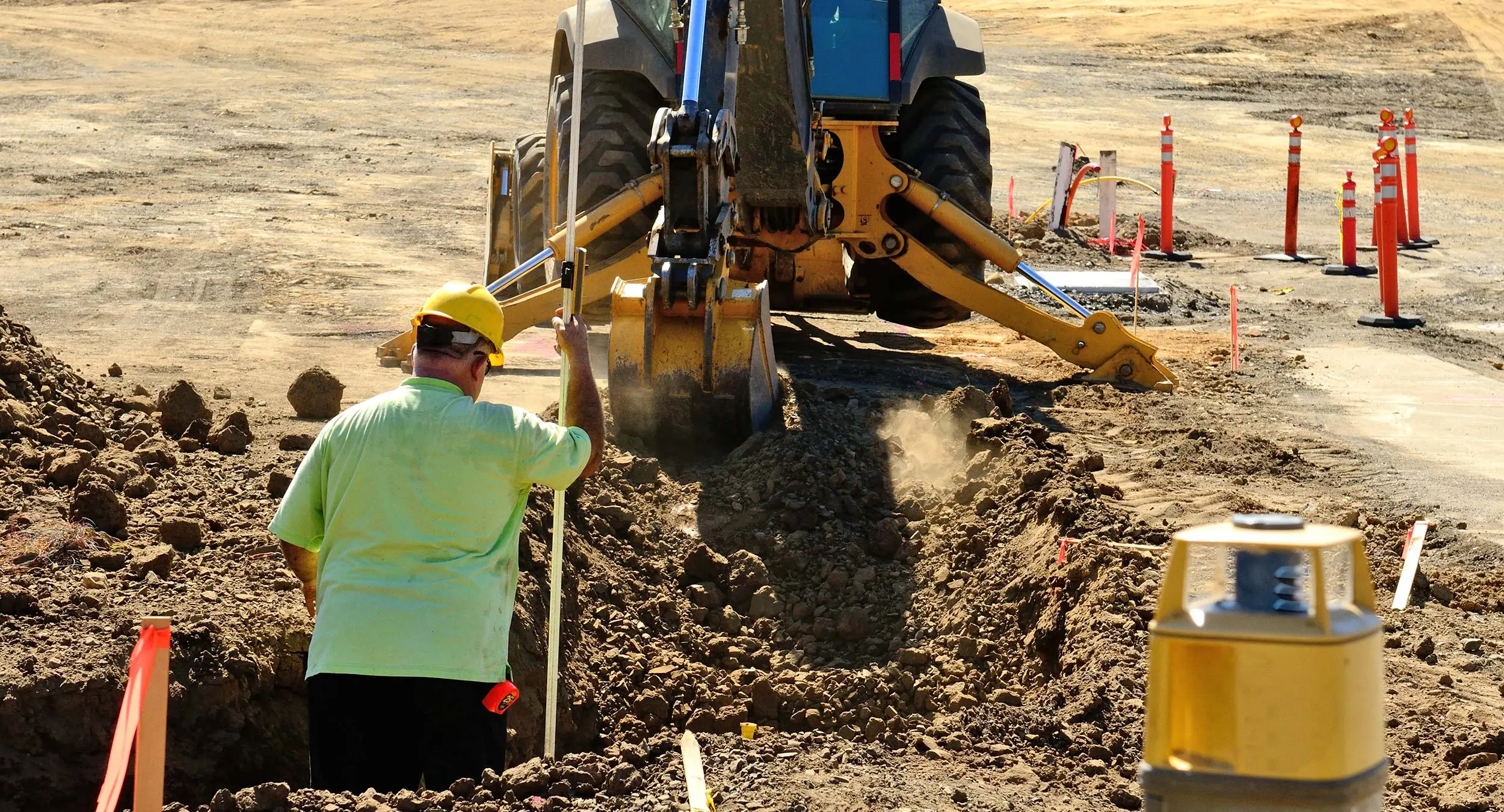Looking to build a basement that will last? This ultimate guide has everything you need! From laying a solid foundation to waterproofing like a pro, we’ll show you the secrets to a rock-solid basement. We’ll even help you make sense of different soil types so you can build with confidence. And because we’re all about comfort and style, we’ll guide you through creating a basement that’s not just functional but also a great place to hang out. Get ready to level up your basement game!
Basement Construction Techniques
Adding a basement to your home is a fantastic way to gain extra living space, a home theater, or even a gym. But before you start picturing yourself relaxing in your dream basement, let’s break down how to build it.
Planning and Preparation: Getting Your Ducks in a Row
Just like any major project, building a basement begins with thorough planning:
- Define Your Vision: Determine how you’ll use the space and establish a realistic budget.
- Assemble Your Team: Consult with an architect or designer to create detailed blueprints and navigate permit requirements.
- Prepare the Site: Clear the area, remove any obstacles like plants or trees, and mark the excavation boundaries.
Excavation and Foundation: Laying the Groundwork
Now for the heavy lifting!
- Excavation: This phase involves digging down to the required depth for your basement, ensuring the ground slopes away from the house for proper drainage.
- Foundation:
- Footings: Concrete footings are poured to create a sturdy base that supports your basement walls, distributing their weight evenly onto the soil.
- Walls: Basement walls can be constructed using poured concrete, pre-made concrete panels, or masonry blocks. Each material offers unique benefits and considerations.
- Waterproofing: Applying a specialized membrane or coating to the outside of the foundation walls is crucial for preventing water damage and mold growth.
Construction Types: Picking Your Perfect Fit
Just like there’s no one-size-fits-all approach to most things, there’s no single “best” way to build a basement. The ideal construction method depends on your specific needs, budget, and property characteristics.
Let’s explore the options:
| Construction Type | Pros | Cons |
|---|---|---|
| Poured Concrete | Strong, durable, cost-effective, customizable shapes and sizes | Requires skilled labor, longer drying time |
| Precast Panels | Fast installation, consistent quality | Less design flexibility, may require heavy equipment |
| Masonry Walls | Good insulation and soundproofing, classic look | Labor-intensive, requires skilled masons |
Factors to Consider: Things That Make a Difference
Choosing the right construction method requires careful consideration of these key factors:
- Soil Conditions: Cohesive soils, like clay, are dense and require stronger foundations. Non-cohesive soils, like sand, drain well but might need extra support to prevent shifting.
- Water Table Levels: High groundwater levels necessitate extra attention to waterproofing and drainage solutions to keep your basement dry.
- Budget: Poured concrete tends to be the most budget-friendly, while precast panels and masonry walls typically cost more.
Additional Considerations: Going Above and Beyond
Let’s explore some bonus tips to elevate your basement:
- Sustainable Building: Opt for eco-friendly materials and energy-efficient techniques to reduce your environmental impact.
- Proper Ventilation: A robust ventilation system prevents moisture buildup, ensures fresh air circulation, and discourages mold growth.
- Fire Safety: Prioritize safety by choosing fire-resistant materials and construction methods to protect your home and family.
- Maintenance: Regular inspections and upkeep will extend the life of your basement and prevent costly repairs.
Building a basement is a significant undertaking, but with meticulous planning, a skilled team of professionals, and a bit of effort, you’ll be enjoying your new space in no time!
How Deep Should a Basement Be Dug?
Now that you’re considering a basement, you’re probably wondering about the ideal depth. While there’s no universal answer, let’s explore the factors to help you determine the right depth for your needs.
Most experts recommend a minimum depth of 8 feet to ensure ample headroom for comfortable movement and space for essential systems like pipes, ductwork, and storage. For a more expansive feel, especially if you envision a finished basement, consider digging deeper to 9 or 10 feet.
However, it’s crucial to consider the water table level in your area. Digging too deep in areas prone to high water tables or flooding could result in a watery disaster. Consult with a professional about foundation drains, sump pumps, and waterproofing solutions to keep your basement dry.
Before you start digging, contact your local building department to inquire about building codes and regulations. They can provide information on the maximum permissible depth in your area, which is typically based on safety and structural considerations.
For exceptionally deep basements, you might consider “dewatering”—a process that involves pumping out groundwater during construction to maintain a dry site. While dewatering can be costly, it’s sometimes necessary to bring your basement vision to life.
Different Types of Basement Construction Explained
Before you start picking out paint colors for your new basement, let’s discuss the different construction methods and their pros and cons.
1. Poured Concrete Basements: The Gold Standard
Poured concrete basements are created by building forms and pouring concrete into them on-site.
Pros:
- Strength and Durability: Poured concrete offers exceptional strength and longevity, similar to your home’s foundation.
- Customization: This method allows for flexibility in design, accommodating unique shapes and sizes.
Cons:
- Cost: Poured concrete is often the most expensive basement construction method.
- Time: The process of pouring and curing concrete can be time-consuming.
2. Precast Concrete Basements: The Speedy Option
Precast concrete basements involve large, pre-made concrete panels that are delivered to the site and assembled like giant Lego blocks.
Pros:
- Fast Installation: Precast panels expedite the construction process, as the walls are already fabricated.
- Cost-Effective: Precast concrete can be more budget-friendly compared to poured concrete.
Cons:
- Strength: While durable, precast concrete might not be as robust as poured concrete.
- Limited Customization: Design options are limited to the available sizes and shapes of precast panels.
3. Masonry Walls: The Classic Look
Masonry walls, crafted from brick, stone, or concrete blocks, offer a timeless aesthetic.
Pros:
- Durability: Masonry has been a favored building material for centuries due to its exceptional strength and resilience.
- Aesthetics: Exposed brick or stone walls lend a classic and visually appealing touch to basements.
Cons:
- Labor Costs: Laying masonry requires specialized skills and time, resulting in higher labor costs.
- Material Expenses: Masonry materials can be more expensive than concrete options.
Choosing the Right Basement Construction for You
The best basement construction method depends on your specific requirements, budget, and preferences.
- Poured Concrete: Ideal if you prioritize strength, design flexibility, and have a longer construction timeline.
- Precast Concrete: Suitable for those seeking speed and affordability, even with some design limitations.
- Masonry: Perfect for homeowners who appreciate a classic aesthetic and are willing to invest in durability and visual appeal.
Consult with reputable contractors in your area to get expert opinions, compare quotes, and select the method that best suits your dream basement!
Basement Waterproofing: Essential Techniques for a Dry Basement
Transforming a damp basement into a usable and enjoyable space requires a solid understanding of waterproofing techniques. Let’s dive into the strategies to keep your basement dry and comfortable all year round.
Inside Job or Outside Operation?
You can choose to waterproof your basement from the inside out or the outside in. A combination of both approaches often provides the most effective defense against moisture.
Interior Waterproofing Techniques:
Interior waterproofing is generally a more budget-friendly option. Here’s how it works:
- Seal Cracks and Gaps: Seal any cracks, gaps, or openings in your basement walls, floors, and ceiling to prevent water seepage.
- Install a Drainage System: An interior drainage system, installed along the perimeter of your basement floor, collects water and directs it to a sump pump for removal.
- Apply a Waterproofing Barrier: Consider applying a waterproofing membrane or coating to your basement walls and floors for an added layer of protection.
Exterior Waterproofing Techniques:
Exterior waterproofing tackles moisture before it reaches your foundation.
- Excavate and Protect: Dig down around your foundation walls to expose them and apply a waterproof membrane or coating directly to the exterior.
- Create a Drainage Pathway: Install a drainage system around your foundation, often combined with French drains, to channel water away from your house.
- Backfill Strategically: Use gravel or other permeable materials to backfill the excavated area, allowing water to flow freely toward your drainage system.
The Winning Formula: A Combined Approach
For maximum basement waterproofing protection, combine interior and exterior techniques. Remember to conduct regular inspections for signs of moisture, such as musty odors, water stains, or efflorescence—white, chalky deposits on your walls. Addressing issues promptly prevents costly repairs in the long run.
By implementing these waterproofing techniques, you can transform a damp, musty basement into a dry, comfortable, and valuable part of your home.
Key Points of Basement Construction
Planning and Preparation:
- Determine the purpose and budget for the basement.
- Hire professionals for design and permit acquisition.
- Clear the construction site and mark the excavation area.
- Consider reviewing tips on a construction site safety board for a secure working environment.
Excavation and Foundation:
- Excavate the basement to the appropriate depth, ensuring proper drainage.
- Pour concrete footings to support the walls.
- Choose the most suitable wall construction method: poured concrete, precast panels, or masonry blocks.
- Thoroughly waterproof the foundation walls to prevent water intrusion.
Construction Types:
- Poured Concrete: Strong, durable, and customizable, but requires skilled labor and a longer drying time.
- Precast Panels: Quick installation and consistent quality, but with limited design flexibility and potential need for heavy equipment.
- Masonry Walls: Provide good insulation, offer a classic look, but are labor-intensive and require skilled masons.
Factors to Consider When Choosing a Construction Type:
- Soil Conditions: Impact foundation strength and drainage requirements.
- Water Table Levels: High water tables necessitate additional waterproofing and drainage measures.
- Budget: Poured concrete is generally the most affordable option.
Additional Considerations for an Enhanced Basement:
- Sustainable Building: Utilize eco-friendly materials and energy-saving techniques.
- Proper Ventilation: Install a good ventilation system to prevent moisture buildup and mold growth.
- Fire Safety: Opt for fire-resistant materials and construction methods.
- Regular Maintenance: Schedule routine inspections and maintenance to ensure longevity.
How Deep Should a Basement Be Dug?
- The ideal basement depth varies based on factors like house type, space requirements, and local building codes. Typically, a minimum depth of 8 feet is recommended.
- Consider water table levels and potential flood risks when determining basement depth, especially in areas prone to water infiltration.
- Local building codes may impose restrictions on maximum basement depth to ensure structural stability and safety. Consult with your local building department for specific guidelines.
- For deep basements, dewatering techniques like wellpoint systems, deep wells, or sump pumps may be necessary to control groundwater levels during construction.
Different Types of Basement Construction Explained
- Basement Construction Evolution: Over time, basement construction has advanced from basic stone and brick to modern concrete methods, including poured concrete and precast concrete panels. Advanced options like insulated concrete forms (ICFs) offer improved insulation and energy efficiency.
- Basement Construction Fundamentals: Regardless of the chosen method, essential aspects of basement construction include creating a solid foundation, ensuring proper waterproofing, and implementing effective insulation for a resilient and functional space.
- Basement Construction Techniques: The optimal basement wall construction method depends on various factors, including soil conditions, required strength, cost considerations, and desired aesthetic.
- Precast Basement Walls: Precast concrete walls are often manufactured off-site and then transported and installed at the construction site, offering efficiency and quality control. This method can streamline the construction process.
Basement Waterproofing: Essential Techniques for a Dry Basement
- Waterproofing Your Basement: A Comprehensive Approach: Basement waterproofing is not a single solution but rather a multi-faceted approach that involves addressing various potential moisture entry points. This comprehensive approach ensures long-term protection.
- Exterior vs. Interior: Choosing the Optimal Waterproofing Method: Exterior waterproofing focuses on preventing water from reaching the foundation walls, while interior waterproofing methods address moisture that has already seeped in.
- Comprehensive Basement Waterproofing Strategies: Effective waterproofing combines multiple techniques, including sealants, epoxy injections for crack repairs, interior drainage systems with sump pumps, and exterior waterproofing membranes or coatings.
- Understanding Moisture Sources and Effective Solutions: To effectively waterproof a basement, it’s crucial to identify all potential sources of moisture, such as cracks, gaps, window wells, and foundation leaks.
By following these comprehensive guidelines and understanding the nuances of basement construction, you can create a durable, comfortable, and valuable addition to your home.
Do you want to build your dream home? Check out our guide on building a house in the Philippines. For innovative construction techniques, explore reveal pod construction.










